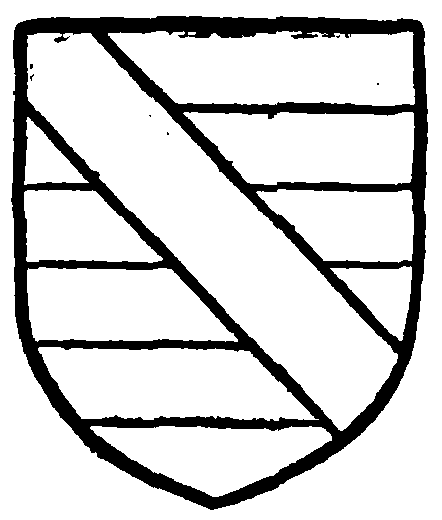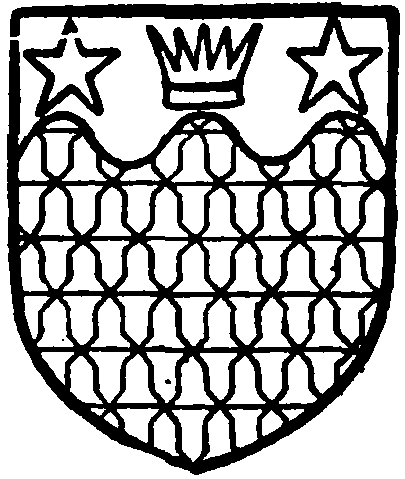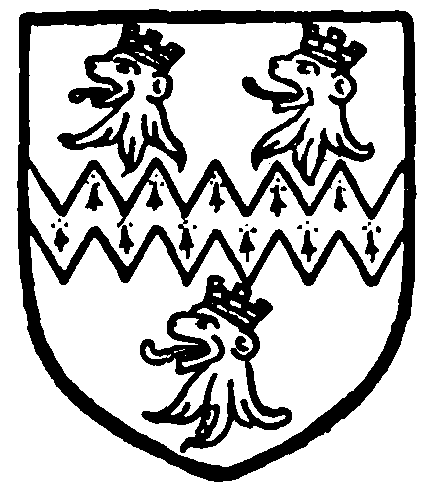A History of the County of Hampshire: Volume 4. Originally published by Victoria County History, London, 1911.
This free content was digitised by double rekeying. All rights reserved.
'Parishes: Pamber', in A History of the County of Hampshire: Volume 4, ed. William Page (London, 1911), British History Online https://prod.british-history.ac.uk/vch/hants/vol4/pp433-435 [accessed 12 March 2025].
'Parishes: Pamber', in A History of the County of Hampshire: Volume 4. Edited by William Page (London, 1911), British History Online, accessed March 12, 2025, https://prod.british-history.ac.uk/vch/hants/vol4/pp433-435.
"Parishes: Pamber". A History of the County of Hampshire: Volume 4. Ed. William Page (London, 1911), British History Online. Web. 12 March 2025. https://prod.british-history.ac.uk/vch/hants/vol4/pp433-435.
In this section
PAMBER
Penebere, Pembre, Panbere (xiii cent.); Pamber (xv cent.).
Pamber is a scattered parish north-west of Basingstoke. It contains 2,184 acres of land, of which about two-sevenths are arable, three-sevenths are permanent grass and two-sevenths are woodland. (fn. 1) At the northern end of the parish is Pamber Common, where the boundary between Pamber and Mortimer is marked by the Impstone. (fn. 2) North-east of Little London, which is itself north-east of the scattered village of Pamber, is Froglane Farm, east of which and close by the Roman road from Winchester to Silchester is Latchmore, now included in the parish of Bramley, but mentioned in the records of Pamber as early as 1282. (fn. 3) Pamber Farm, Pamber End, Elm Farm, Wigmore Farm and Ravens Cot Farm are in the parish. Court Corner, where Pamber Court used to be held, lies south of Wigmore Farm.
The soil is clay and gravel; the crops are wheat, barley and oats. The common lands were inclosed under an Act of 1824. (fn. 4)
Among place-names in local records are the following:—Welberewe, Lachemere, Blakewatere (xiii cent.) (fn. 5); Tyghecroft, (fn. 6) Cnovylleslond, (fn. 7) Brodehalewyk, le Hole Mouse (xiv cent.) (fn. 8); Long Towe, (fn. 9) Maries Copse, (fn. 10) Gold Oak, now Gold Oak Copse (xvii cent.). (fn. 11)
Manor
The land which is now included in the parish of PAMBER was in early times within the metes of Pamber Forest, and though grants of assart and licences for inclosure were given to various families in the neighbourhood, (fn. 12) there was, as far as can be ascertained, no court held for Pamber until the 17th century, and hence there was no manor.
The bailiwick of the forest was held in the reign of Edward I by John de St. John, (fn. 13) who conveyed it to his son Hugh about 1324, (fn. 14) and Margaret widow of Hugh was seised of it at the time of her death. (fn. 15) She was succeeded by her son Edmund, (fn. 16) who died in 1347, leaving the bailiwick to the elder of his two sisters, Margaret the wife of John de St. Philibert. (fn. 17) Margaret died before 1353, when the bailiwick passed to her sister Isabel the wife of Sir Luke de Poynings, (fn. 18) who was succeeded on her death in 1393 by her son Sir Thomas de Poynings. (fn. 19) He died about 1429, (fn. 20) but his descendants remained in possession of the bailiwick during the next hundred years, and in 1535 Henry VIII granted the governorship of Pamber Forest to Sir William Paulet, afterwards Marquess of Winchester, ' in consideration that Hugh St. John, whose heir he was, had been seised of that office as of fee and inheritance.' (fn. 21) Lord St. John in 1669 had still the title of 'Keeper of all woods and underwoods in Pamber Forest,' (fn. 22) though the woods had been sold more than fifty years before, when the land was granted by James I to John Waller and Thomas Purcell, with the right of holding courts within the liberty of the forest. (fn. 23)

Poynings. Barry or and vert with a bend gules.
This property seems to have been bought, before the death of Waller in 1618, by William Marquess of Winchester, (fn. 24) who died in 1628, leaving as his heir his son John, the celebrated defender of Basing House. (fn. 25) John Marquess of Winchester died 10 March 1675, and was succeeded, in accordance with a settlement made on his marriage to Lady Honora Bourke in 1645, (fn. 26) by Lord Francis Paulet or Powlett, her eldest surviving son, who married Anne Breamore and had two sons and one daughter. (fn. 27) The sons both died unmarried, but the daughter, Anne Paulet, married the Rev. Nathan Wright, the second son of Sir Nathan Wright, keeper of the Great Seal. (fn. 28) She had two sons, Powlett and Nathan; the elder married Mary daughter of Francis Tyssen of Hackney in 1740, and died leaving one son, Powlett, who died unmarried in 1779, and was succeeded by his uncle Nathan. (fn. 29) The widow of the elder Powlett Wright in 1745 married Richard Benyon, the Governor of Fort St. George, and had one son Richard, who was born in 1746 and succeeded to the estate in Pamber, in accordance with the will of his half-brother Powlett, after the death of Nathan Wright. (fn. 30) Richard Benyon married Hannah Hulse (fn. 31); their eldest son Richard died without children in 1854 and left the property to his nephew Richard, the second son of Edward Fellowes, (fn. 32) who assumed the name of Benyon on his succession to the estate. He died in July 1897, and was succeeded by his nephew, Mr. James Herbert Fellowes, now Benyon, the present owner of the greater part of the parish.

Benyon. Vairy sable and or and a chief wavy or with an eastern crown between two molets gules therein.

Fellowes. Azure a fesse dancetty ermine between three lions' heads razed or with mural crowns argent.
The grant of the forest land to Waller and Purcell 1615 had included the right to 'have within the said premises a court leet, view of frankpledge, swainmote, and all other courts, liberties and privileges, and all waifs and strays,' and consequently disputes arose between the successors of William Paulet Marquess of Winchester and the self-styled lords of Pamber—probably the freeholders in the parish—whose custom it was to hold an irregular court. This court was ' kept yearly 20 July in an Orchard under an Aple tree within the parish of Pamber but out of the Liberty of the Forrest . . . when the Tythingman for the time being sitts in an Elbow Chair with his Hatt on as Lord of the Manour; the other people uncovered stand while the Steward swears the Jury and gives them a Charge usuall as at other Courts Leet. Then their Court Rolls were brought, being a large bundle of Squar'd sticks about two foot and a half long, on which were entred their Customs and usuall presentments.' (fn. 33) The 'Tythingman Lord' was chosen for the ensuing year, during which he had the right to hunt and hawk as far as Windsor, and might keep or sell for his own profit ' such stray Cattle as are taken up and put into the Pound and have no Owners and so become to the Lord of the Manour.' (fn. 34) These 'Pamber Lords' about 1740 refused to recognize Powlett Wright's claim to ' the manor,' though they admitted that the timber growing on the waste land within the forest was his. (fn. 35) The case was tried at the summer assizes at Winchester in 1793, when the verdict was given in favour of the plaintiff, Mr. Benyon, (fn. 36) but nevertheless the court of the tithingman lord was held as late as 1817. (fn. 37)
Another large holding in the parish was sometimes also given the name of the manor of Pamber; in 1488, for example, when it was claimed from Sir Morgan Kydwelly by Peter Coudray, who stated that it had been given to his grandfather by William Brocas, Ingram atte Moure and others. (fn. 38) The 'manor' is not mentioned before this date, and it seems to have been merely the union of several holdings under one owner.
About 1206 King John granted to Rogo de Sacy such seisin of his land of Pamber as he had held when he departed from the king's service, (fn. 39) and in 1217 the grant was confirmed to Aimery, (fn. 40) Rogo's son and heir, who 'gave to Peter his son' all the rents from Pamber before 1253. (fn. 41) Possibly an heiress of Peter the son was Cecily the wife of Walter de St. Manifeo, who alienated to William le Kenne (fn. 42) 10s. rent which he had been accustomed to pay to her, and 1½ virgates of land about 1271. (fn. 43) William and Joan his wife must have had other property in Pamber, for in 1298 they alienated a rent to Roger de Coudray, (fn. 44) and William, who was probably their son, was still holding 40s. rent and lands there in 1346. (fn. 45)
It is impossible to say whether Beatrice the wife of Richard atte Moure was of kin to Cecily de St. Manifeo, but she certainly held in Pamber of the king in chief the land which her brother-in-law, John atte Moure, acquired of her in 1348. (fn. 46) John was succeeded before 1387 by his son Robert, who in that year granted to Sir Bernard Brocas all his interest in 'a rent of forty shillings and twelve pence from the land which his father had lately acquired from the Prior of Sherborne.' (fn. 47) One of the witnesses to this grant was Henry atte Moure, who seems to have been Robert's heir, for he quitclaimed to Sir Bernard the lands granted by his kinsman, (fn. 48) and in 1391 he was dealing with certain lands which had formerly belonged to John atte Moure. (fn. 49) Henry had married Joan le Kenne, who was probably the daughter of the second William, and by this means had no doubt become possessed of the lands which he held in Pamber in 1381. (fn. 50) They made a grant of land to Sir Bernard Brocas in 1377, (fn. 51) and, though Joan seems to have denied part of this grant after her husband's death, she quitclaimed the disputed land to Sir Bernard's son, William Brocas, in 1402. (fn. 52)
The atte Moures continued to hold land in the parish for several generations. William, who was perhaps the grandson of Henry and Joan, died seised of six messuages, four tofts and 40 acres in Pamber and Inhurst in 1482. (fn. 53) He was the son of John atte Moure of Wyford in the parish of Tadley, and his holding in Pamber seems to have followed the descent of that manor; it afterwards belonged to the Ludlows, who were descendants of the atte Moures, and was sold by Edmund Ludlow to Daniel Blagrave in 1641. (fn. 54) The present lord of the manor of Wyford, Major Hicks Beach, is one of the principal landowners in the parish of Pamber.
The Brocases of Beaurepaire gained possession of several holdings in Pamber parish during the 14th century. Sir Bernard Brocas acquired land there from Peter Lytlewerke and Agatha his wife in 1349, (fn. 55) and from the trustees of John Inge in 1393 (fn. 56); he also obtained a small holding, besides the grant already mentioned, from Henry atte Moure in 1391. (fn. 57) Finally, certain lands in Pamber and Tadley were granted by John Fabyan, a member of a family which had been established in the neighbourhood at least as early as 1316, (fn. 58) to Oliver Brocas, who conveyed them to his kinsman, William Brocas, in 1420.
A grant of ' land between Pamber Forest and William atte Moure's croft' was made in 1428 by William Brocas to Ingram atte Moure and Alice his wife. This holding was perhaps part of the land that was afterwards granted to Peter Coudray of Herriard, (fn. 59) who conveyed it to trustees ' to hold to the use of William Coudray and Avice his wife for their lives, and afterwards to make estate of the premises to Peter Coudray,' his grandson. (fn. 60) The younger Peter seems to have thought that the grant was for the life of William only, for in 1488 he sued Avice and her second husband, Sir Morgan Kydwelly, for 'the manor of Pamber.' (fn. 61) Avice died in 1496, (fn. 62) but Peter Boyle, the only surviving trustee, refused to give up the estate, and Peter Coudray brought a suit against him in Chancery to recover it. (fn. 63)
Advowson
There is no record of the church used by the villagers of Pamber until 1564, in which year they complained that the Provost and Fellows of Queen's College, Oxford, who had succeeded to Sherborne Priory lands, had neglected to provide a minister. (fn. 64) They declared that it had been the custom time out of mind for the inhabitants of Pamber to attend divine service at the church of Sherborne Priory, and that it had been enacted by Parliament at the time of the dissolution of the priory that those who held the land thereto belonging should depute a priest to be resident there. The Provost and Fellows replied that only a chantry priest had been appointed, that the chantry had been dissolved in the reign of Edward VI, and that in the time of Queen Mary, when a like suit had been brought against them, the Chancellor had decreed that the inhabitants of Pamber should resort to Monk Sherborne Church (q.v.) as parishioners thereof. (fn. 65)
It was eventually arranged that the dwellers in Pamber should keep their tithes and profits to provide for a priest, and that the Provost and Fellows of Queen's College should give them leave to use the old Priory church. (fn. 66) The parish is still annexed to Sherborne for ecclesiastical purposes, and the parishioners use the priory church by permission of Queen's College. There is also a mission church, which was built by the late Mr. Benyon, on Pamber Heath, and a cottage in Little London is used for divine service on Sunday. There is a Primitive Methodist chapel.
Charities
On the suppression of the Benedictine priory of Monk Sherl orne in 1414 an annual sum of £1 3s. 4d. was reserved for the poor, which is duly received from Queen's College, Oxford, under the title of Adam de Port's Charity.
The poor also receive 50s. a year, being onesixth part of a rent-charge of £15 issuing out of lands at Baughurst, devised by will of Thomas Sympson, 1674, of Sherborne St. John. These charities are administered together and applied in the distribution of money.
In 1700 Samuel Wheat, by will, charged his estate in Silchester with 30s. a year to be employed in buying coats for three poor people to be distributed on 1 November yearly. Coats or jackets are duly given.